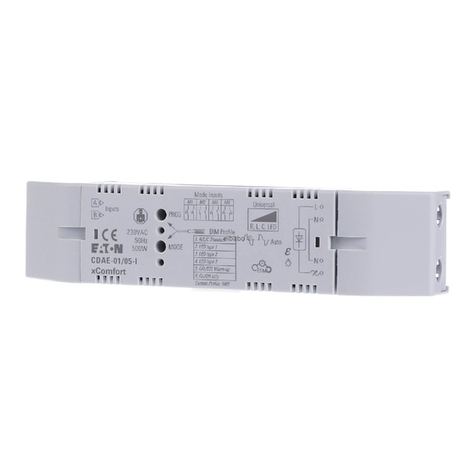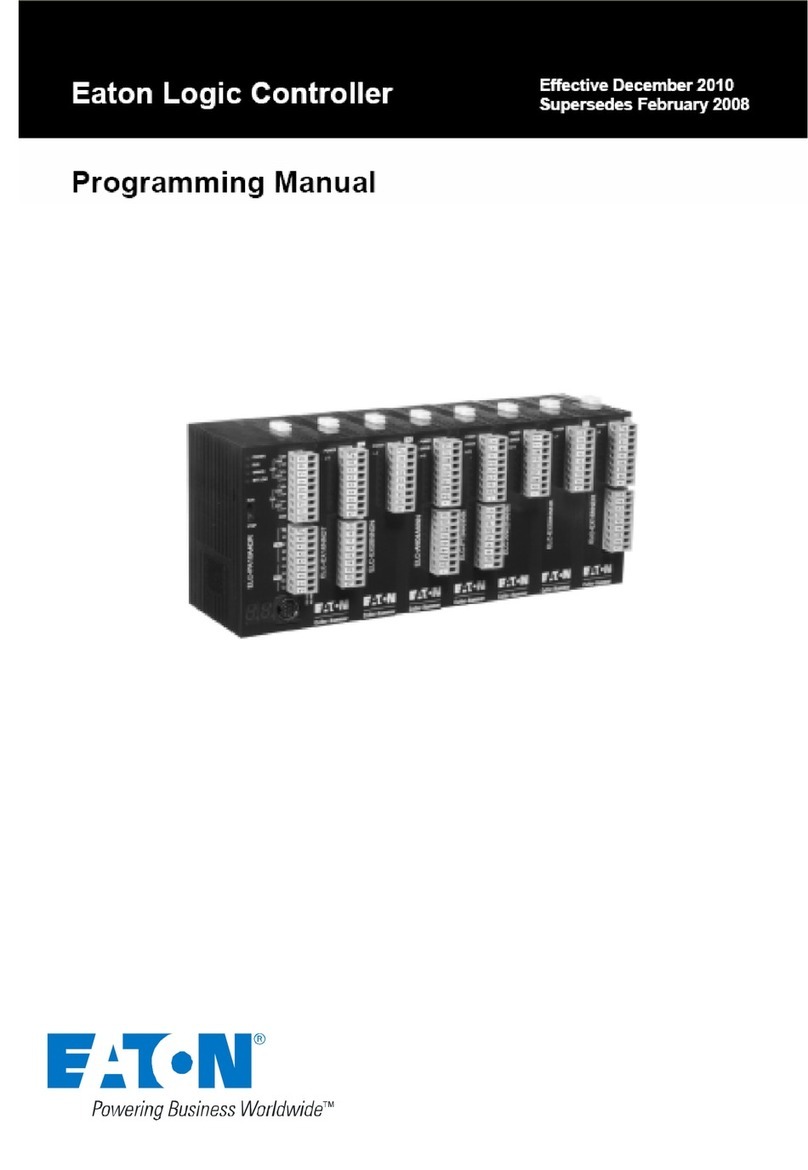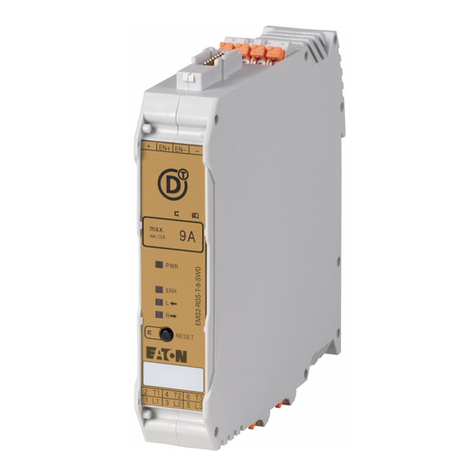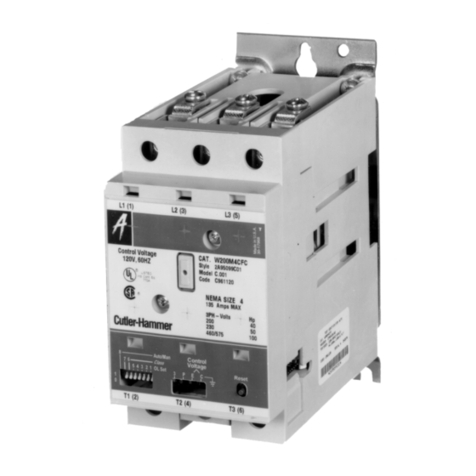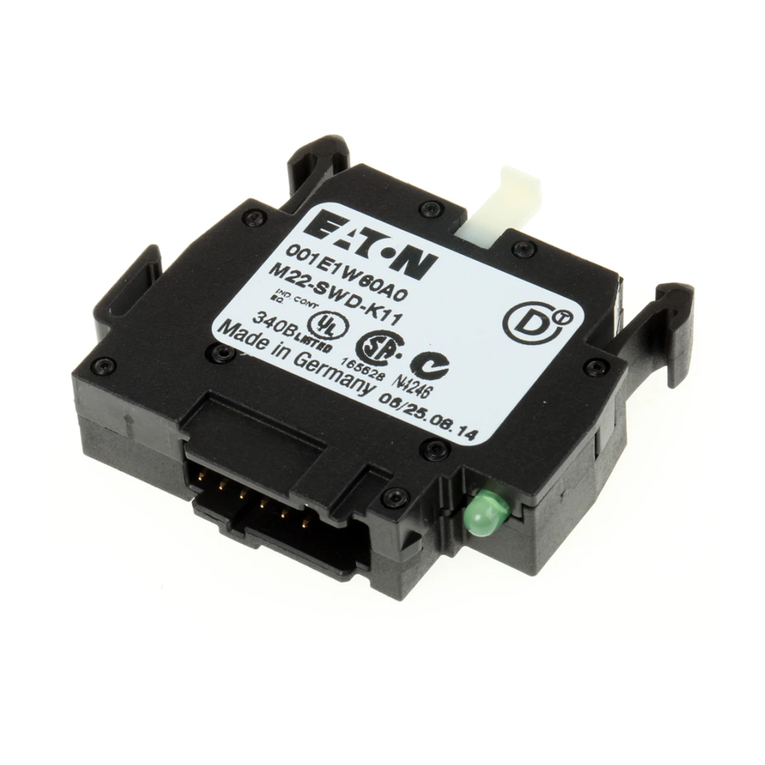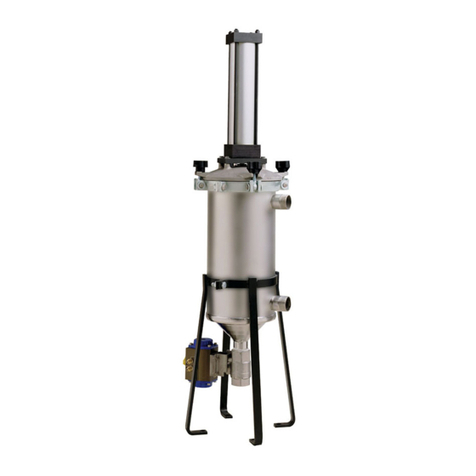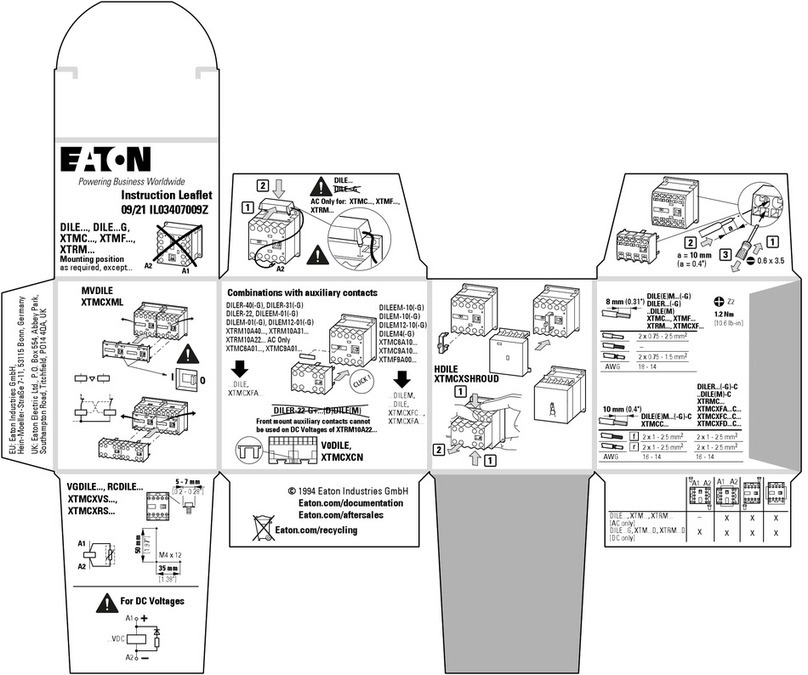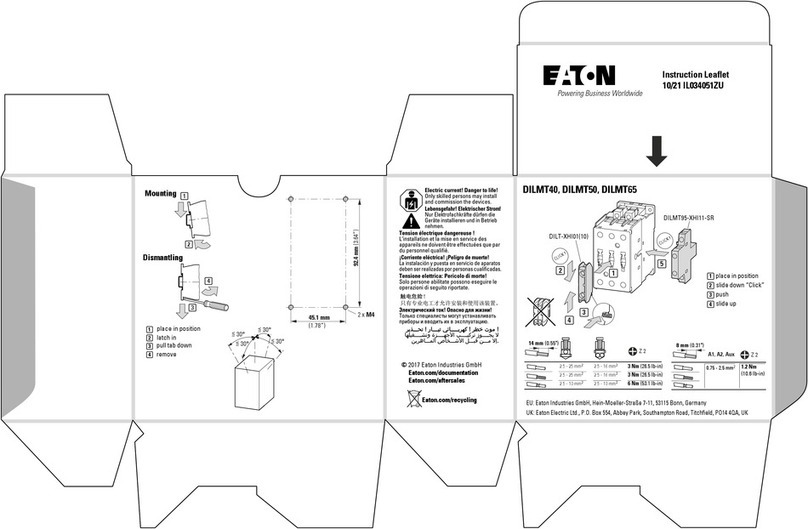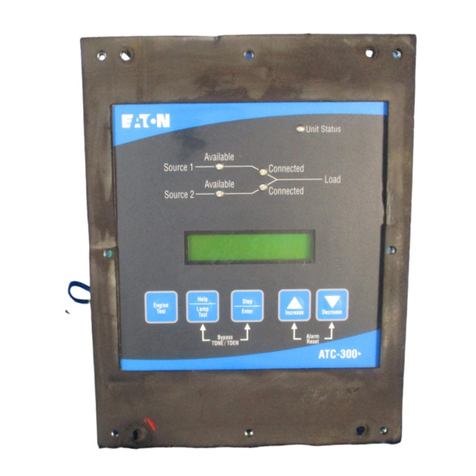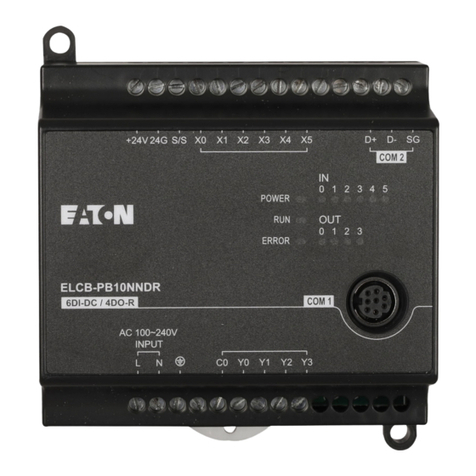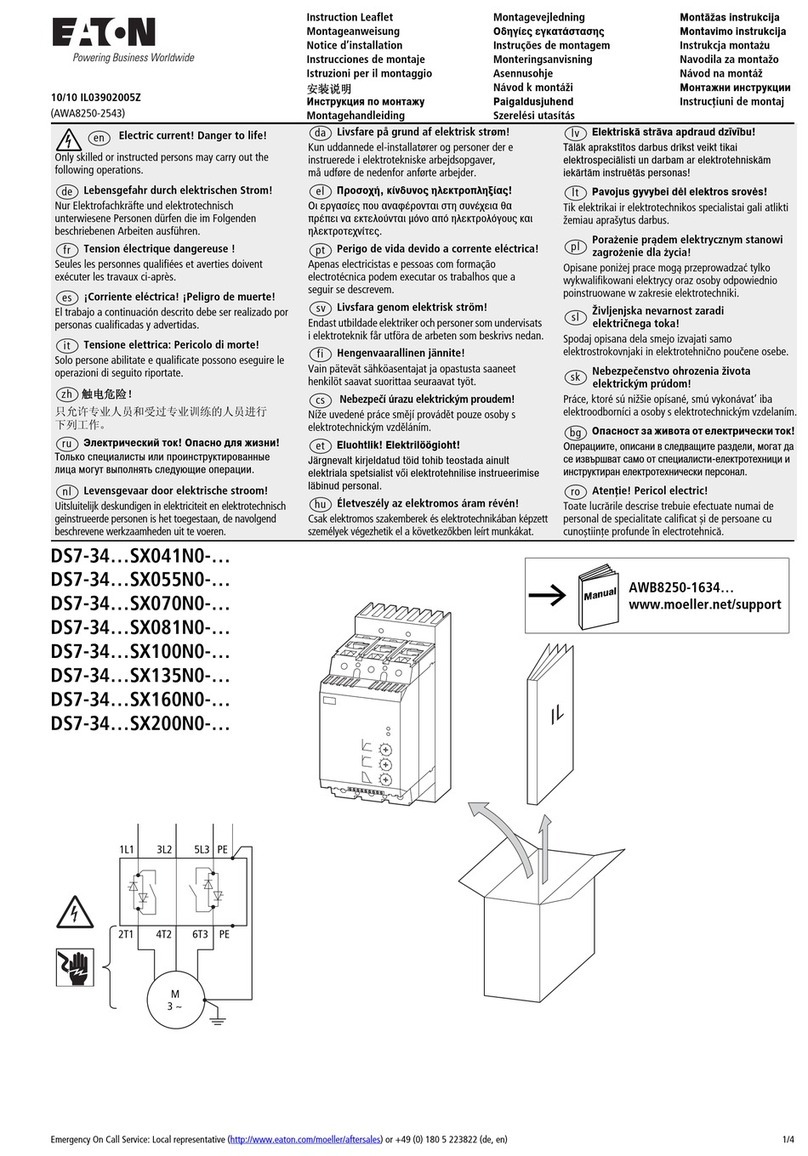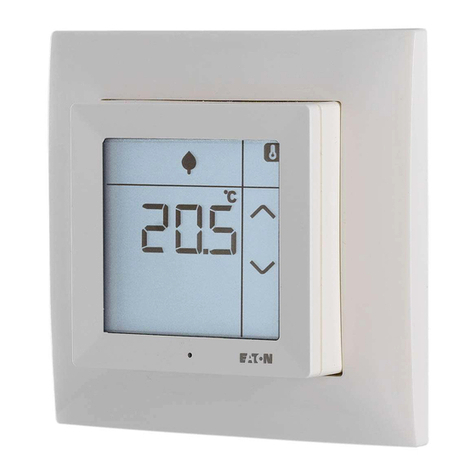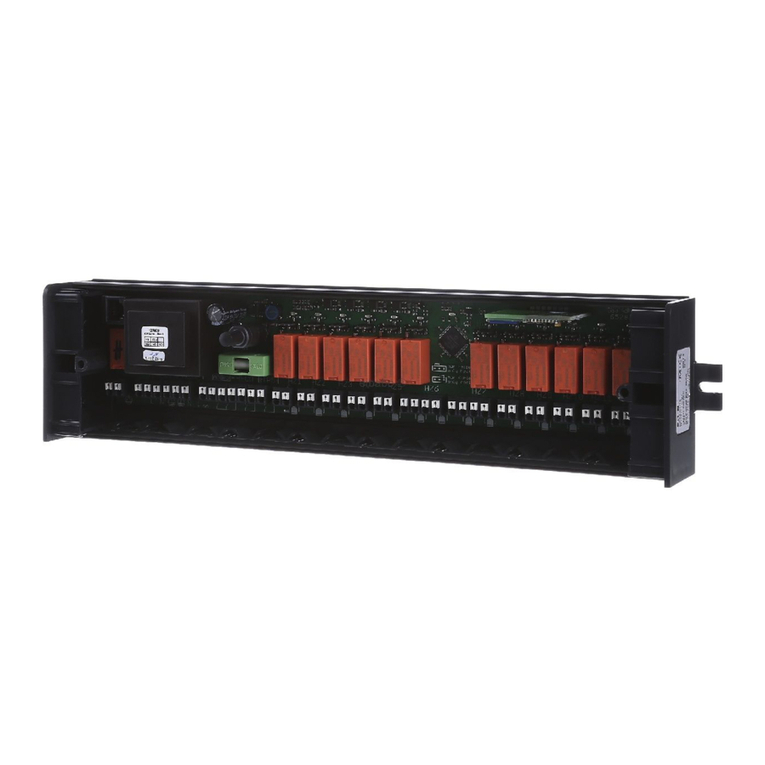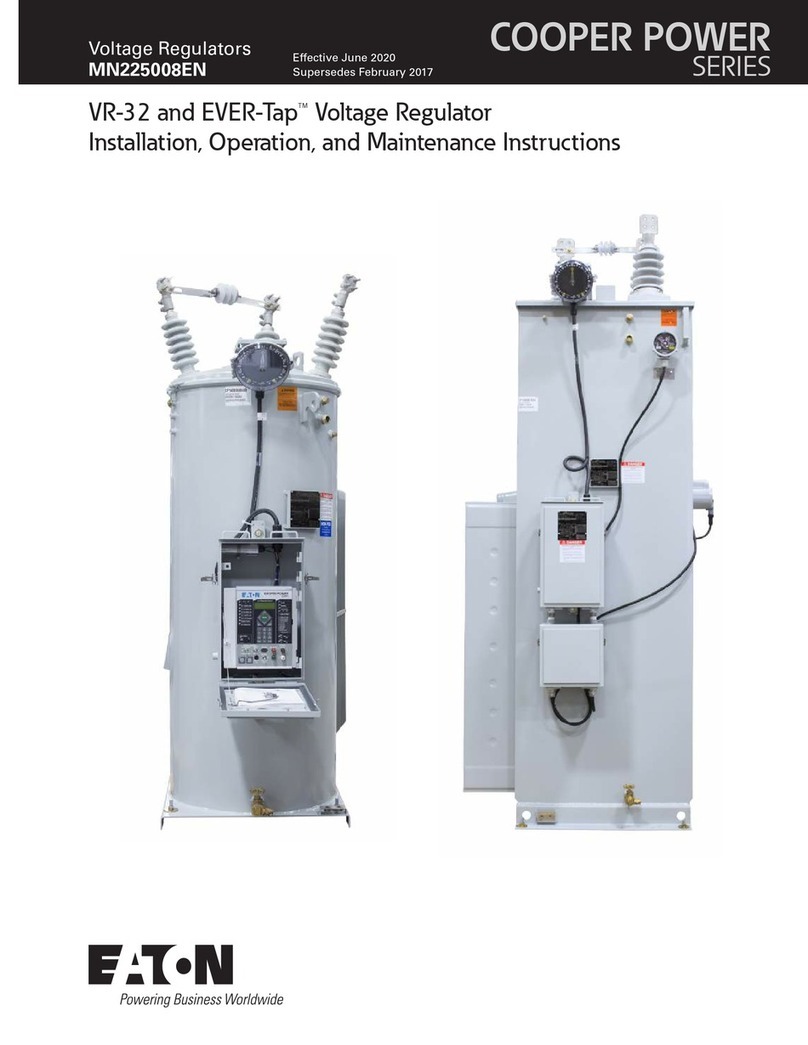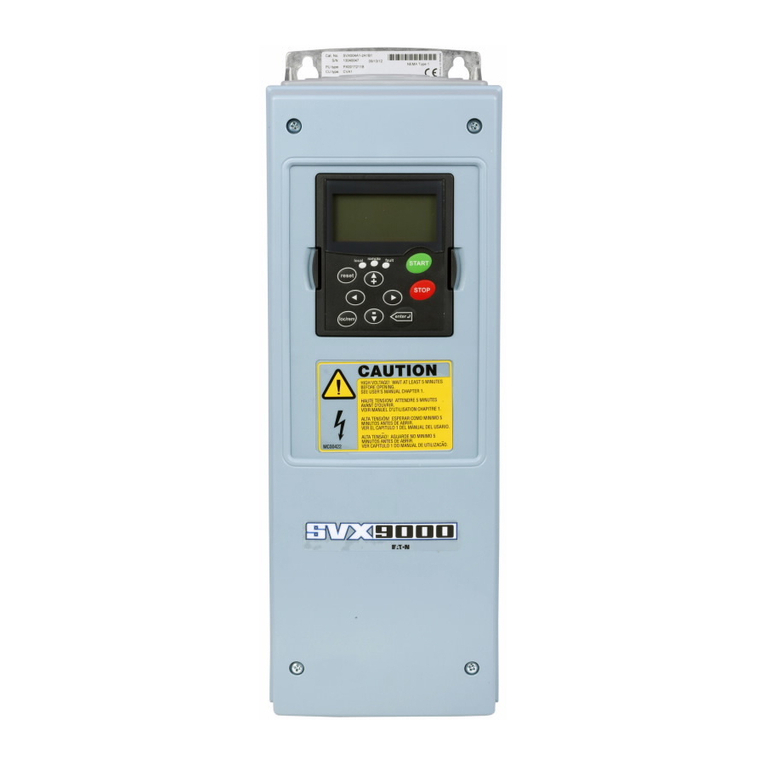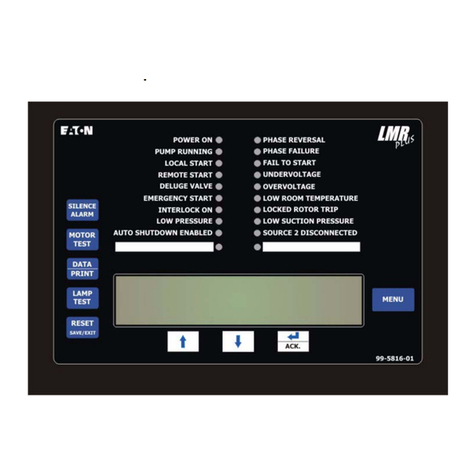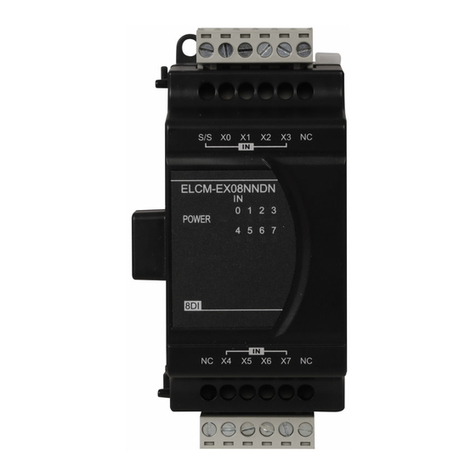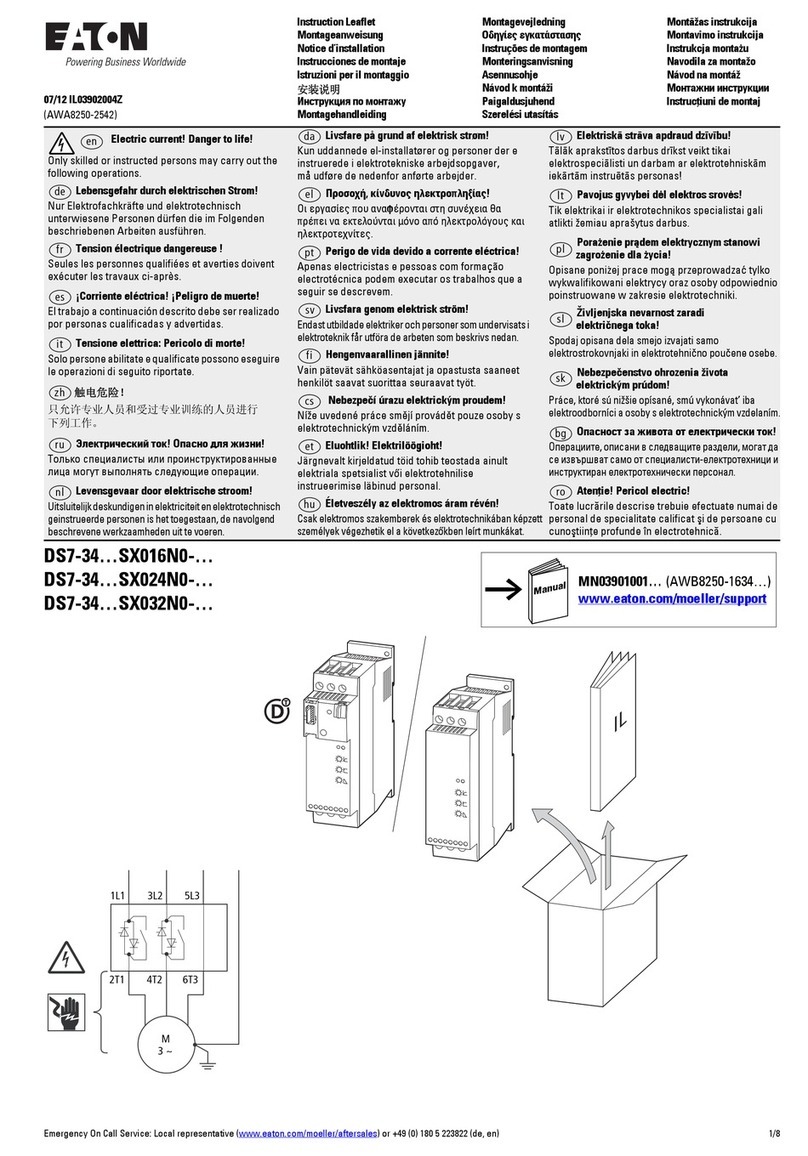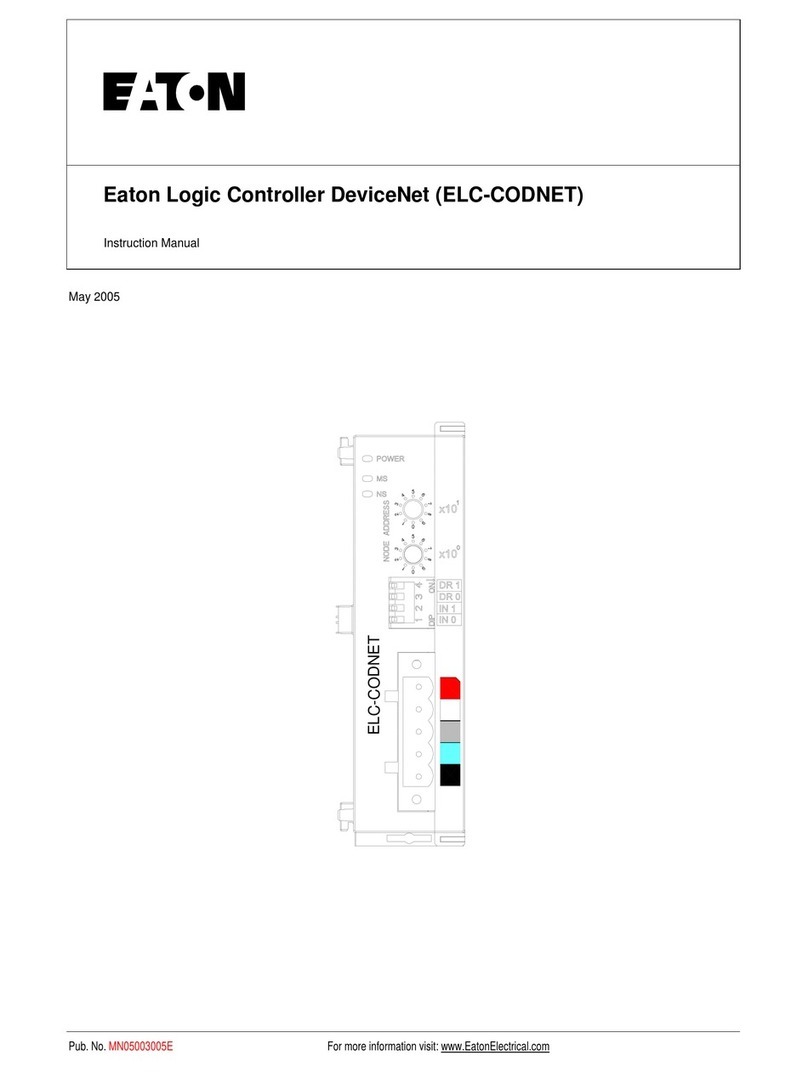
2
Instruction Leaet IL16958
Effective May 2011
For A200 Size 00, 0, 1
3 Pole Motor Controller
EATON CORPORATION www.eaton.com
AUXILIARY CONTACTS -TYPE J (cont.)
To remove the unit rotate the retainer screw several times
(counterclockwise) and then slide the auxiliary contact unit out of
the recess.
TYPE B OVERLOAD RELAY (See Figure 3)
This A200 motor controller is usually equipped with a Type B block
type ambient compensated overload relay (with gray reset rod). The
controller can also be supplied with a non-ambient compensated
overload relay (with red reset rod). The relay is of the bimetal
actuated type equipped with a normally-closed control contact. An
optional isolated normally-open control circuit is available for field
mounting. When the overload relay trips, a yellow dot will appear
flush with the molded surface below the reset rod. Resetting the
relay returns this indicator to its normal concealed position.
HEATERS
Heaters are not included with the motor controller and must be
ordered separately per the heater selection table and the information
listed below. When installing heaters be sure that connecting
surfaces are clean and heaters are attached securely to the relay
in the proper location with the screw provided. The trip rating of a
heater in a 40°C Ambient is 125% of the minimum fullload current
shown in Table II. When tested at 600 percent of its trip rating, the
relay will trip in 20 seconds or less.
TYPE A OVERLOAD RELAY (See Figure 4)
The A200 motor controller can be equipped with a Type A block type
non-ambient compensated overload relay (unmarked and with red
reset rod) or with a block type temperature compensated overload
relay (marked “ambient compensated” and with gray reset rod). The
relay is of the bimetal actuated type equipped with trip indicator, trip
adjustment covering ± 15% of rating and a normally-closed control
contact. It may be operated with either hand or automatic reset.
Reset operation is determined by the position of the plate on the
load side of the overload base. Position the reset plate away from
the panel to set the “hand” position. Loosen the locking screw,
move the reset plate toward the panel, and retighten the screw to
set the “auto” position.
Automatic reset should not be used with 2-wire control circuits
where automatic starting of the motor may be hazardous.
Figure 3. Type B overload Relay
Figure 4. Type A Block Overload Relay
